Art by Munch and Vigeland you can see in Oslo
What is Oslo like?
With a population of just 600,000, the capital city of Norway has an intimate feel. There is a calm, peaceful vibe to Oslo - no one seems to be in a rush, the buses arrive on time and you can always find a table in the best restaurants. Add to this a beautiful view of a fjord and you can understand why a visit to Oslo is so relaxing.
There are really great hotels in the centre of the city. Leave your accommodation and you can walk with ease to most places of interest. If you'd rather be driven, the public bus, tram and metro service is really efficient, frequent, and a pleasure to use. As everyone speaks English, asking for help is easy, and locals seems happy to assist tourists which makes a travellers experience even better. The only real downside is the fact it is quite expensive to eat and drink out. Be prepared for this, and follow a few hints and tips in my other article, and you'll have a great time in Oslo.
Who painted The Scream?
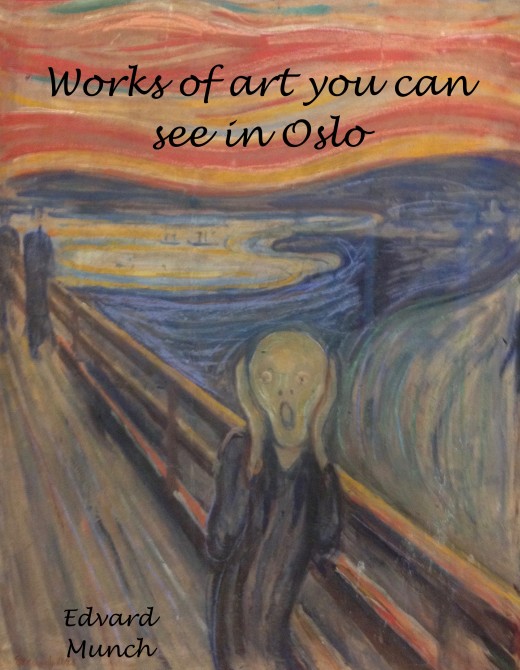
Munch museum in Oslo
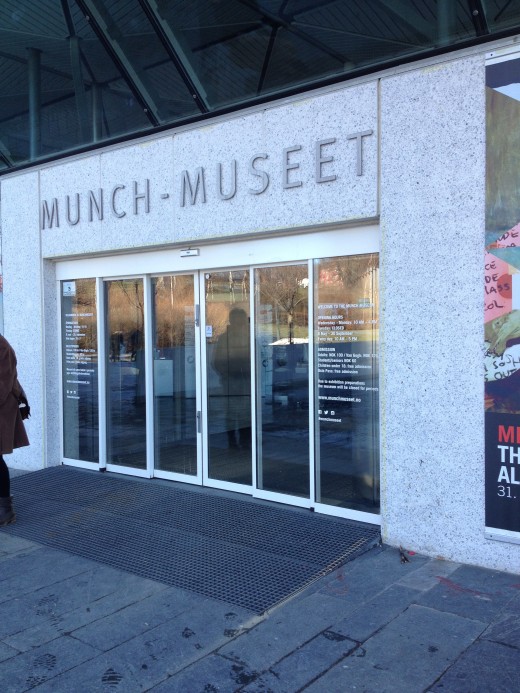
Where can you see The Scream by Munch?
As Edvard Munch was Norwegian, and an artist who contributed outstanding pieces of work expressing deep pain and anguish, many come to Oslo to see his work and find out more about him. The Munch museum, therefore, is top of the list of places to visit for any fans of Expressionism and Modern Art.
This small museum is next to the Natural History museum in Tøyengata and is reached by Subway lines heading to Tøyen, or by the number 20 bus, or by a 30-minute walk from the centre of town. The first room is a small auditorium where continuous films and documentaries let you know about the artist's life. Here you learn about his demons, the women in his life, and how this affected his work. This is a great way to begin the exhibition, it helps to understand the artist and the art you are about to see.The largest collection of Edvard Munch's work is housed in this museum, and they are often presented in different ways, side-by-side with other artists.
Interestingly, his most well-known paintings, The Scream and Madonna, are not in this museum at all, but they can be found in the National Gallery which is in a different part of the city, not too far away.
Oslo's National Gallery houses The Scream by Edvard Munch
The National Gallery is in Oslo centre, just next to the university. It has a permanent exhibition which takes you through the history of art, and shows how styles and subjects have changed through the decades. Within the collection are works by Picasso, Matisse, Monet, Christian Krohg and many more. This gallery is a nice size to walk around, it's small enough to see all the exhibits, but large enough to have a variety of art that can appeal to everyone's tastes.
There are roughly 30 pieces of work by Munch at the National Gallery including his most well-known painting, The Scream. Also here is his works entitled 'Madonna', 'Melancholy', 'Moonlight', and my personal favourite, 'The Dance of Life'. It is very exciting to see these pieces in Norway, and was a highlight of my trip to Oslo.
Edvard Munch The dance of Life
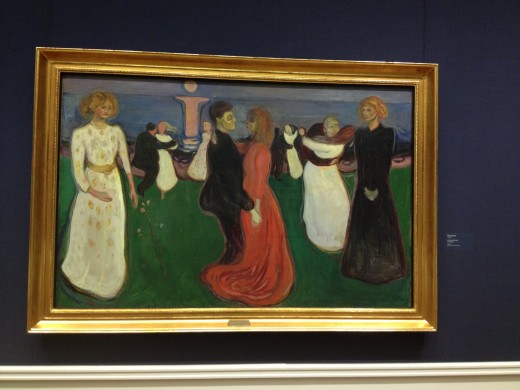
Vigeland Park
Vigeland Park is one of Norway's most popular visitor destinations and is filled with 200 sculptures by Norwegian sculpture Gustav Vigeland. The artist, who lived from 1869 to 1943, designed the park itself and it is a beautiful place to walk around. It looks equally lovely in the sunshine, and in the snow. There is a museum here, too, which documents Vigeland's life, and houses further work by him. When it's time for a little refreshment, a small cafe serves hot and cold drinks as well as lunches just inside the park gates.
Some sculptures at Vigeland Park
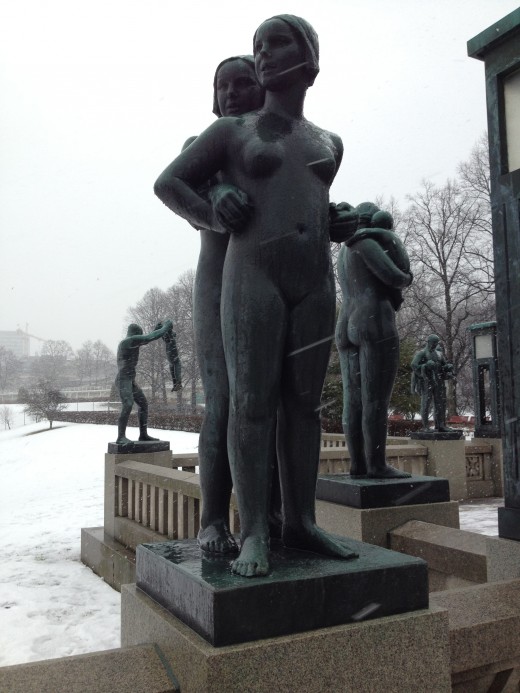
The fjord at Oslo
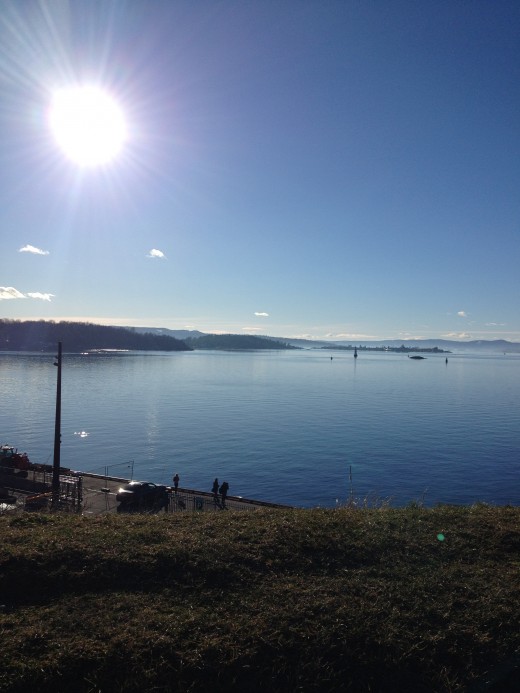
Art galleries in Oslo
Museet for Samtidskunst, or the Contemporary Art Museum, shows pieces from 1945 to present day. The gallery prides itself on exhibiting new media, styles and subjects. Audio, photography and performance art also feature here.
Astrup Fearnley Museum is along the waterfront and can be reached via a pleasant walk past the small, island ferries. This is a privately owned gallery displaying modern art, with a focus on American artists from 1980 onwards.
For those who like something a little quirky, there's the Mini Bottle Gallery, which claims to be the only one of its ilk in the world. Arranged over three floors, there are 53,000 bottles from around the globe. The rooms themselves have fun installations, like a slide you can use to travel between floors.
The Tiger
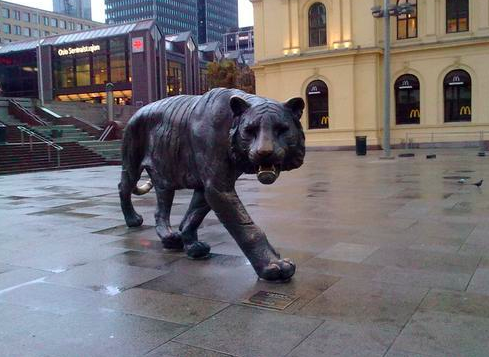
Statues around Oslo
There are statues to be found all over the city. Down by the harbour are sculptures of divers which look like they've been made out of liquid mercury, and in front of the City Hall are strong images of labourers. And right outside the main railway station is a giant tiger.
The Tiger was created by Elena Engelsen in 2000 to celebrate the 1000-year anniversary of Oslo. The reason a tiger was the subject is due to the city’s nickname - Tigerstaden.
The Oslo Pass
The entrance of all these attractions, except the Mini Bottle Gallery, are included in the Oslo Pass - a city pass which can be bought for 24, 48 or 72 hours. It permits free entry into lots of popular attractions, and for train, tram and bus travel too. In an expensive city, these are extremely good value for money and they can be easily bought in advance or at hotels, tourist centres and select points in Oslo.









